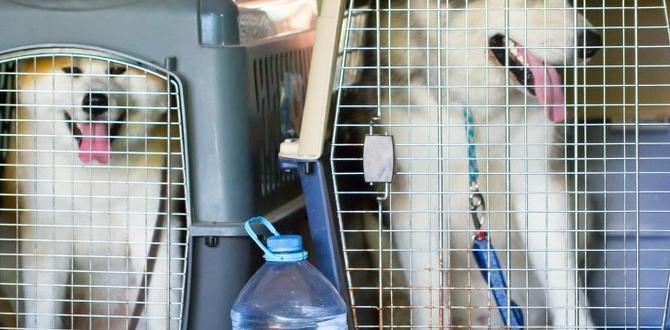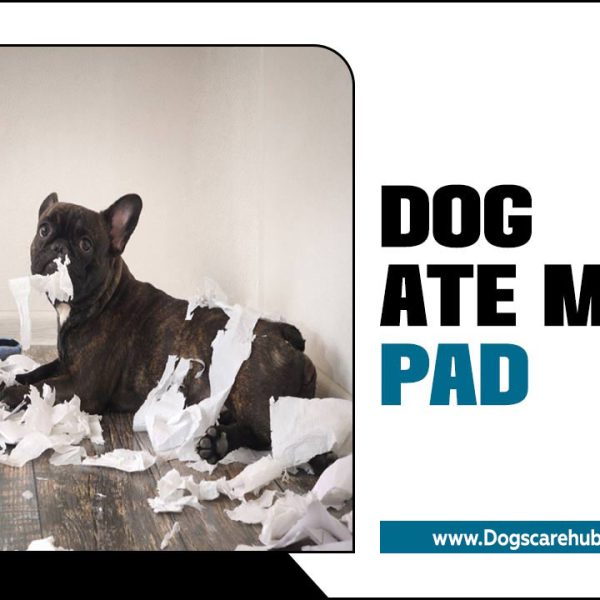Have you ever watched in horror as your dog darted toward a busy road? The thrill of the chase can seem exciting, but it can also be very dangerous. Many dog owners face the challenge of stopping their pet from chasing cars. It’s not just about safety; it’s also about peace of mind.
Did you know that this behavior is often driven by instinct? Some dogs chase moving objects because they want to play or because their natural hunting instincts kick in. But there are ways to change this behavior. Imagine going for a walk without worrying about your furry friend running into traffic. Wouldn’t that be wonderful?
In this article, we will explore simple and effective ways to help you stop your dog from chasing cars. By using fun techniques and training, you can keep your dog safe and calm. Let’s dive into some great solutions!
Effective Ways To Stop Your Dog From Chasing Cars

How to Stop a Dog from Chasing Cars
Do you dread walking your dog near busy roads? Many dogs chase cars, which can be dangerous. To prevent this behavior, try positive reinforcement. Reward your dog for focusing on you instead of the cars. Teaching commands like “leave it” can also help. Did you know that training sessions can be fun? Incorporate games and treats! Remember, patience is vital. Your furry friend can learn to stay safe and calm around moving vehicles.Understanding the Behavior
Reasons why dogs chase cars. Importance of recognizing triggers and developing awareness.Dogs enjoy chasing moving things. Cars zoom by, and their instinct kicks in. They may see it as a game or a way to show off their speed. Recognizing these triggers helps owners manage their pets better. For instance, a barking dog might be reacting to a car passing by. With some awareness and training, we can teach them it’s not a fun game. After all, chasing cars is no paw-ty for anyone!
| Reason for Chasing Cars | Effect on Dog | Owner’s Action |
|---|---|---|
| Instinct | Heightened excitement | Provide distractions |
| Curiosity | Increased energy | Redirect focus |
| Need for exercise | Behavioral issues | Regular walks |
Training Techniques to Discourage Car Chasing
Methods for basic obedience training. Using positive reinforcement to redirect behavior.To keep your dog from chasing cars, start with basic obedience training. Teach commands like “sit” and “stay.” A well-trained pup is less likely to dart into traffic. Next, use positive reinforcement. Reward your dog with treats or praise when they ignore moving cars. It’s like giving them a cookie for good behavior! After all, who doesn’t love cookies? The table below shows some effective training techniques:
| Technique | Description |
|---|---|
| Basic Commands | Teach “sit,” “stay,” and “come.” |
| Positive Reinforcement | Reward desired behaviors with treats. |
| Distraction Training | Use toys to divert attention from cars. |
Consistency is key. The more your dog practices, the safer they’ll be. Remember, patience and fun go a long way. Your pup could be the next car-chasing champion or just a well-behaved buddy waiting for you at the park!
Creating a Safe Environment
Fencing and boundary solutions. Importance of supervision during outdoor activities.Making sure your dog stays safe while outside is super important. Strong fences can keep your furry friend from dashing into the road. It’s like building a fortress, just without the dragons! Boundary solutions help define their play area and keep them away from cars. Also, don’t forget to watch them closely during outdoor fun. Supervision is key! It’s like being a lifeguard, but instead of a pool, it’s a backyard. Remember, safety first, fun second!
| Solution | Description |
|---|---|
| Fencing | Build a sturdy fence to keep your dog safe and sound. |
| Supervision | Always keep an eye on your dog outside, just in case! |
Behavioral Modifications
Counterconditioning techniques to change dog’s response. Desensitization exercises to reduce anxiety around vehicles.Changing how a dog reacts to cars can be fun! First, use counterconditioning. This means replacing the scary car noise with something good, like treats. Every time a car goes by, reward your dog with a tasty snack. Next, try desensitization exercises. Start far away from cars where your dog feels safe. Gradually move closer as they relax. Remember, patience and treats are key! Here’s a handy table to guide you:
| Technique | Steps |
|---|---|
| Counterconditioning | 1. Cars pass by. 2. Give treats. Repeat! |
| Desensitization | 1. Start far away. 2. Move closer slowly. 3. Stay calm! |
With a lot of treats and a little fun, your dog can learn to be calm around cars. It’s easier than training a cat to fetch!
Engaging Alternatives to Redirect Energy
Providing sufficient exercise and mental stimulation. Interactive toys and games that keep dogs engaged.Dogs need fun activities to keep them happy. Exercise helps them stay healthy and focused. Try taking your dog for walks or playing fetch. This keeps their energy in check. You can also use interactive toys. These toys challenge dogs mentally and make playtime exciting. Here are some ideas:
- Fetch balls that squeak
- Puzzle toys for treats
- Agility courses at home
These fun activities can help stop your dog from chasing cars.
What types of toys keep dogs engaged?
Interactive toys and puzzle games are great for keeping dogs mentally stimulated and busy. These toys challenge their minds and keep them entertained.
Professional Help and Resources
When to consider a professional dog trainer. Resources and support groups for dog owners.Sometimes, a little outside help goes a long way! If your furry friend can’t stop chasing cars like they’re in a race, it might be time to contact a professional dog trainer. These experts know the tricks to make your pup listen. They can teach your dog safer habits, and help you both enjoy walks. Support groups can also offer great advice and share stories. After all, you’re not alone in this doggy dilemma!
| Resource Type | Description |
|---|---|
| Professional Trainers | Help teach your dog the right behaviors. |
| Support Groups | Connect with other dog owners for tips and support. |
In fact, studies show that dogs learn best with positive reinforcement. Trainers might use treats or toys to reward good behavior. Who doesn’t love a treat? So, consider reaching out to these resources to help turn your car-chasing canine into a calm companion!
Long-Term Strategies for Success
Consistency in training and habits. Ongoing monitoring and adjustments for behavior management.Training a dog takes time and patience. One of the biggest secrets to success is consistency. Practice the same commands every day, and your dog will learn faster than a squirrel running up a tree! Keep the training sessions short but fun. Reinforce good behavior with treats or praise—who doesn’t love snacks? Also, keep an eye on your pup’s progress. Make adjustments as needed. If your dog keeps chasing cars, it might be time to rethink your game plan. Just remember, even the best trainers have to tweak things sometimes. The journey to a well-behaved dog can be bumpy, but it’s worth it!
| Strategy | Description |
|---|---|
| Routine | Set a regular schedule for training sessions. |
| Reward System | Use treats and praise for good behavior. |
| Monitoring | Keep track of your dog’s progress regularly. |
| Adjustments | Tweak your training methods based on your dog’s responses. |
Conclusion
In conclusion, stopping your dog from chasing cars is important for their safety. You can use training techniques like leash control, distractions, or positive reinforcement. Make sure to keep your dog exercised and engaged. If you’re unsure, seek help from a trainer. Together, we can keep our furry friends safe and happy! For more tips, keep reading!FAQs
What Are Some Effective Training Techniques To Prevent My Dog From Chasing Cars?To stop your dog from chasing cars, we can use some fun training techniques. First, practice “sit” and “stay” commands at home. When your dog stays calm and doesn’t chase, reward them with treats. You can also take them on walks away from busy roads. Always keep your dog on a leash during walks to keep them safe.
How Can I Create A Safer Environment To Reduce My Dog’S Urge To Chase Moving Vehicles?To make your yard safe, use a tall fence to keep your dog inside. Play with your dog in the yard to distract them from cars. Teach your dog commands like “stay” or “come” to help them listen. When you walk your dog, always use a leash. This way, your dog won’t run after moving vehicles.
What Are The Potential Dangers Of Allowing My Dog To Chase Cars, Both For The Dog And For Drivers?Letting your dog chase cars can be very dangerous. Dogs might get hit by a car and get hurt badly. They could also run away, and you might not be able to find them. For drivers, a dog in the road can cause accidents. It’s safer for your dog and everyone else if your dog stays away from cars.
Are There Specific Breeds That Are More Prone To Chasing Cars, And How Can I Help Them?Yes, some dog breeds, like Border Collies and Greyhounds, are more likely to chase cars. They have lots of energy and love to run. To help them, you can keep them on a leash when outside. Also, play games with them to use up their energy. Training them to focus on you can also help.
How Can I Use Distractions Or Positive Reinforcement To Redirect My Dog’S Attention Away From Traffic?You can use fun toys or treats to get your dog’s attention. When you see traffic, say their name and show them a toy. If they look at you instead of the cars, give them a treat. This way, they learn that looking at you is better than looking at traffic. Always keep it fun and positive!
Meet Elyse Colburn, the devoted canine companion and storyteller behind the enchanting world of “Tales, Tails, and Adventures Unleashed.” A passionate dog enthusiast with a heart full of paw prints, Elyse Colburn shares heartwarming tales and insightful adventures, celebrating the joy, loyalty, and endless antics that make every dog a true hero. Join Elyse Colburn on this tail-wagging journey, where every post is a love letter to our four-legged friends.





